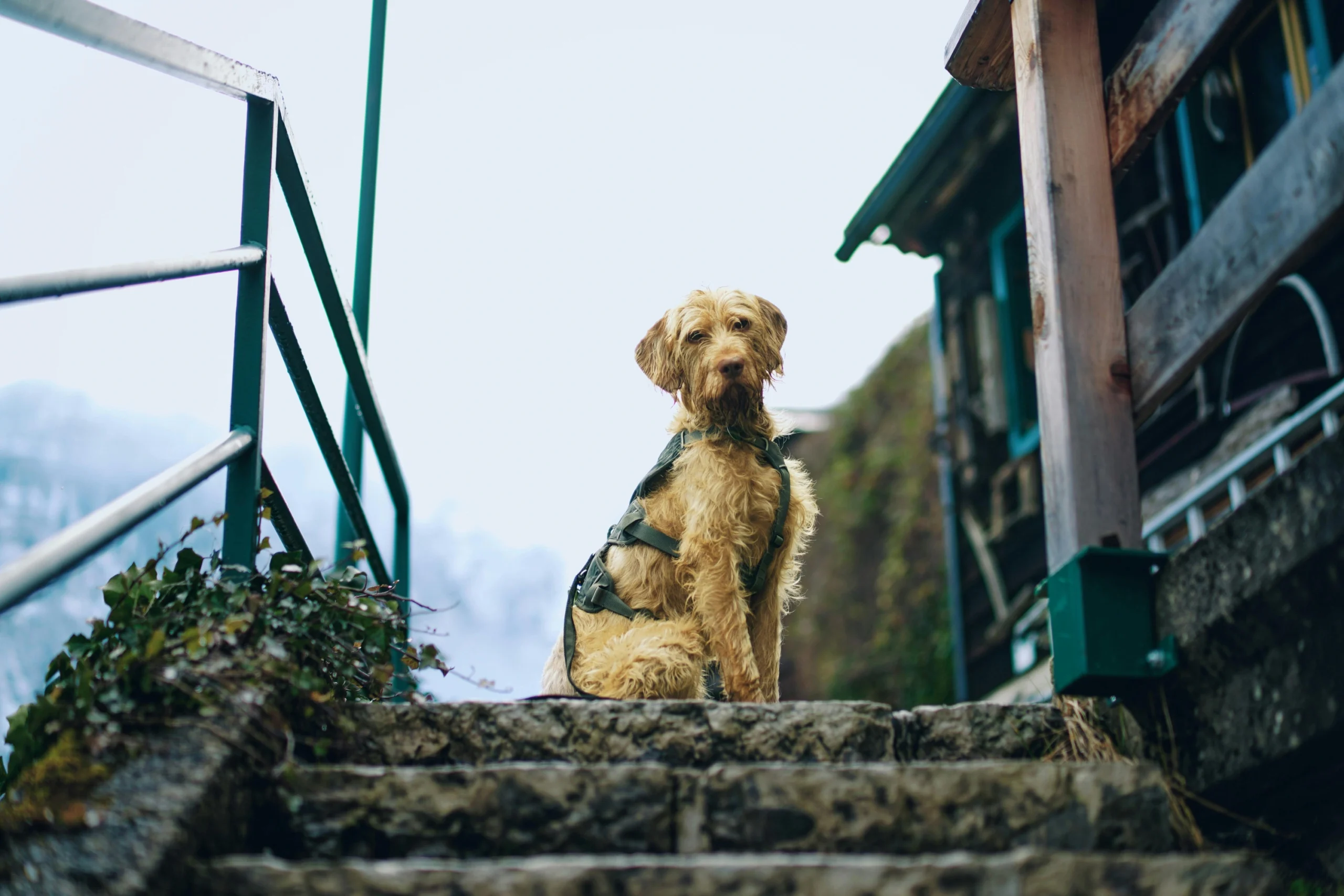Table of Contents
TogglePet training is important to maintaining a positive connection with your four-legged pet. Imagine being able to train your pet from the comfort of your own home, all while wearing your cozy pyjamas. It may sound like a far-fetched dream, but with the advancement of technology and the availability of internet materials, pet training in pyjamas has become a reality for many pet owners.
Gone are the days of struggling to find time in your busy schedule to attend obedience classes or hire expensive trainers. You may now go on a quest to change your animal friend’s behavior from the comfort of your living room couch.
As a veterinarian, I will explore how pet training in pyjamas has revolutionized how we train our beloved companions and discover some effective tips and techniques you can implement today to achieve remarkable results.
Why Train Your Pet in Pyjamas?
If you have a naughty dog or a curious cat, PJ training offers an exceptional chance to establish a peaceful and relaxing learning atmosphere. With their cozy and familiar feel, pyjamas bring comfort to the training process, helping your pet feel secure and at ease.
3 advantages of pet training in pyjamas
Pet training in pyjamas is not only a possibility but also comes with many advantages. Gone are the days when you had to drag yourself out of bed and struggle to get dressed before attending obedience classes or hiring expensive trainers.
With this unconventional approach, you can teach your pets new tricks in your favorite fleecy pyjamas.
Comfort and relaxation
Training in pyjamas promotes a relaxed atmosphere for both you and your pet. Dressing in comfortable clothing puts you at ease, allowing you to focus more on the training session rather than any distractions or discomfort caused by restrictive clothing.
According to research, wearing pyjamas during pet training encourages a closer bond between you and your four-legged friend. By eliminating the formalities of traditional training attire, such as suits or sneakers, you create a more intimate setting where trust and connection can flourish.
Your pet may also feel more comfortable around you when they see that even during these important moments together, you prioritize their comfort over superficial appearances.
Less stress
One of the most notable benefits is the reduced stress level for you and your furry friend. Traditional training methods often require specific outfits and a formal setting, increasing anxiety levels for pets who may associate these elements with veterinary visits or stressful situations.
In contrast, training in comfortable pyjamas creates a relaxed atmosphere where your pet feels more at ease. Choosing this casual attire lets you focus on the process rather than worrying about appearances.
You and your pet can concentrate solely on the task without the pressure of dressing up or performing in front of others. This relaxed mindset fosters better communication between owner and pet as it eliminates distractions that could hinder progress during traditional training sessions.
Consistency
One major advantage of pet training in trousers is the consistency it offers. When you establish a routine where training sessions occur regularly, and in a predictable environment, your pet is more likely to understand and retain what they learn.
The study has shown that wearing pyjamas during these sessions can be a visual cue for your pet that it is time to focus and follow commands. Because you are likely to be more relaxed and comfortable in your own home wearing pyjamas, you will be better able to maintain patience and provide consistent feedback.
Consistency is crucial in training animals, as repetition helps them grasp concepts more effectively. By conducting training sessions regularly while wearing pyjamas, you create an atmosphere of familiarity that enables pets to associate the attire with learning time.
Preparing for Pyjama Pet Training
It is a unique approach that combines comfort with training, providing a relaxed atmosphere for you and your furry friend. So, how can you prepare for this exciting adventure? Here are some essential steps to prepare:
Choose the right pyjamas.
When it comes to pet training, comfort plays a crucial role, and that includes what you wear during the process. Firstly, opt for pyjamas made of soft and breathable Choosing the appropriate pyjamas may make or break the success of your training sessions.
This will keep you cool and comfortable even during prolonged training sessions with your canine companion.
The study has suggested that an important aspect to consider is the fit of your pyjamas. While loose-fitting outfits may seem like a cozy choice, they can hinder your movement and make it difficult for you to interact with your pet effectively. Instead, choose form-fitting pyjamas that allow easy movement while providing ample comfort.
Take note of the style and color of your jammies. During training sessions, bright colors or loud patterns might distract you and your cat. Opt for neutral or calming tones that create a serene environment conducive to learning.
Gather necessary supplies
Before embarking on this unique training journey, gathering all the necessary supplies is essential. The first item on your list should be a set of adorable pyjamas designed specifically for pets.
Not only do these pyjamas look irresistibly cute, but they also provide a sense of comfort and security for your four-legged companion.
Aside from the pyjamas, you will need an array of training treats to keep your pet motivated. Make sure to choose healthy and tasty treats so that your pet remains excited and engaged throughout each session.
Having a clicker or whistle can be beneficial for conveying positive reinforcement signals effectively.
These simple tools allow you to mark desired behaviors and reward your pet promptly. To create an environment conducive to successful pyjama pet training, consider getting interactive toys specifically designed for training.
These toys keep your furry friend entertained and serve as valuable aids in reinforcing positive behaviors.
Establish clear goals
By setting specific objectives for your furry friend, you can effectively track their progress and ensure successful training sessions. It involves identifying precisely what behaviors or skills you want your pet to learn while wearing their comfy nighttime attire.
Effective Pyjama Pet Training Methods
Training your pet in pyjamas may seem unconventional, but it can effectively establish a routine and promote better behaviour.
Positive reinforcement
One method that has shown great success is positive reinforcement. By rewarding your pet with treats, praise, or playtime whenever they exhibit the desired behaviour, you encourage them to continue repeating that action.
Positive reinforcement has proven more effective than punishment-based methods because it establishes a strong bond between you and your pet.
Instead of inducing fear or stress in your furry companion, positive reinforcement helps them associate good behavior with something pleasant.
Frequent sessions
Short and frequent sessions are often the key to success. Like humans, pets have limited attention spans, especially when feeling comfortable and relaxed in their nighttime attire.
One effective method is to start with a specific command or behavior you want your pet to learn, such as sitting or lying down.
Begin each session by gently prompting them with the desired action, using treats or positive reinforcement as rewards. Keep the training session no longer than 10 minutes to prevent boredom or fatigue from setting in.
Clear commands
One important aspect of this training method is using short and clear commands. By keeping your commands concise, you are more likely to grab your pet’s attention and ensure they understand what you want them to do.
When using short commands, be sure to keep them consistent. For example, if you want your dog to sit, say it every time instead of using different phrases like take a seat or please sit down. Consistency helps pets understand the meaning behind the command and speeds up their learning process.
Patience is essential
According to research, one key factor is patience. Like any other training method, seeing results takes time and consistency. It is important to remember that animals can sense our frustration or impatience, hindering learning.
So instead of rushing through the training sessions, please take a deep breath and approach it calmly and positively.
Another effective method is to keep the training sessions short and sweet. Animals have shorter attention spans than humans, so long training sessions might not hold their interest.
You can maximize their attention and engagement levels by keeping the sessions brief but focused. This will also prevent them from getting bored or overwhelmed with too much information at once.
Safety first
Safety should always be a priority when training your pet, regardless of the attire you choose to wear. Ascertain that your pet’s habitat is safe and clear of any potential threats.
Another key factor to bear in mind is consistency.
Like with any other training method, consistency also plays a crucial role in pyjama pet training. Establishing a routine will help your pet understand what behavior is expected from them and form positive habits accordingly.
Conclusion
Pet training in pyjamas offers a convenient and comfortable approach to teaching our furry friends new tricks and behaviors. Whether it’s early morning or late at night, we can now engage in productive training sessions without the hassle of getting dressed.
The relaxed atmosphere created by wearing pyjamas helps to foster a positive and stress-free environment for both pet and owner. This method allows us to bond with our pets deeper and spend more quality time together.
FAQs
1. Can I train my pet in pyjamas?
Yes, absolutely! Training methods focus on positive reinforcement and can be done from the comfort of your home.
2. What type of pets can be trained using your methods?
These training techniques can be applied to dogs, cats, birds, rabbits, and other common household pets.
3. Are there any age restrictions for training my pet?
No, these training methods can be used for pets of all ages, from puppies and kittens to senior animals.

Dr. Usman Bajwa, a dedicated veterinarian with a passion for pets, brings years of expertise to the world of pet grooming. Through his blog, he shares valuable insights and practical tips to help pet owners provide the best care for their furry companions. With a focus on promoting the health and happiness of pets, Dr. Usman articles offer easy-to-follow guidance on grooming techniques. When he’s not writing, you can find him at his clinic or enjoying time with his own beloved pets.




